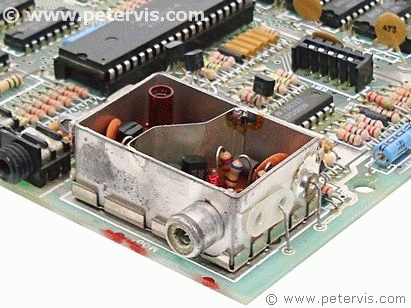Sinclair ZX Spectrum Computer Composite Video Mod


UHF modulators such as the UM1233 in 80s home computers are for televisions that receive analogue transmissions. If you feed their output to a modern television set with a digital tuner, then it will not recognise the signal.
Usually, 80s home computers will produce a composite video signal; however it is internally converted to a UHF analogue signal by the modulator. If an engineer can find a way to feed this composite video signal to a modern television receiver, then that could work. Modern television sets usually have one SCART socket for compatibility, and it is possible to feed a composite video signal through this interface.
In this multi page article, I show two ways how the composite video signal could be fed to a modern television set. One method is to remove the UHF modulator, and use that space to install a socket to provide outputs for a composite video signal, and an audio signal. Then all that is required is to build a SCART cable, which feeds the audio and video signals to the appropriate pins in the SCART connector.
The second method, known as "Bypass Method", requires minimal modifications to the UHF modulator, and modifies it to produce a composite video signal from the same socket. This can then be connected to the "video input" socket of a modern television receiver.
This Article Continues...
Sinclair ZX Spectrum Computer Composite Video ModZX Spectrum Composite Video Mod
Sinclair ZX Computer Sound & Video on TV Part 1
Jack to SCART Cable
UHF Modulator Circuit